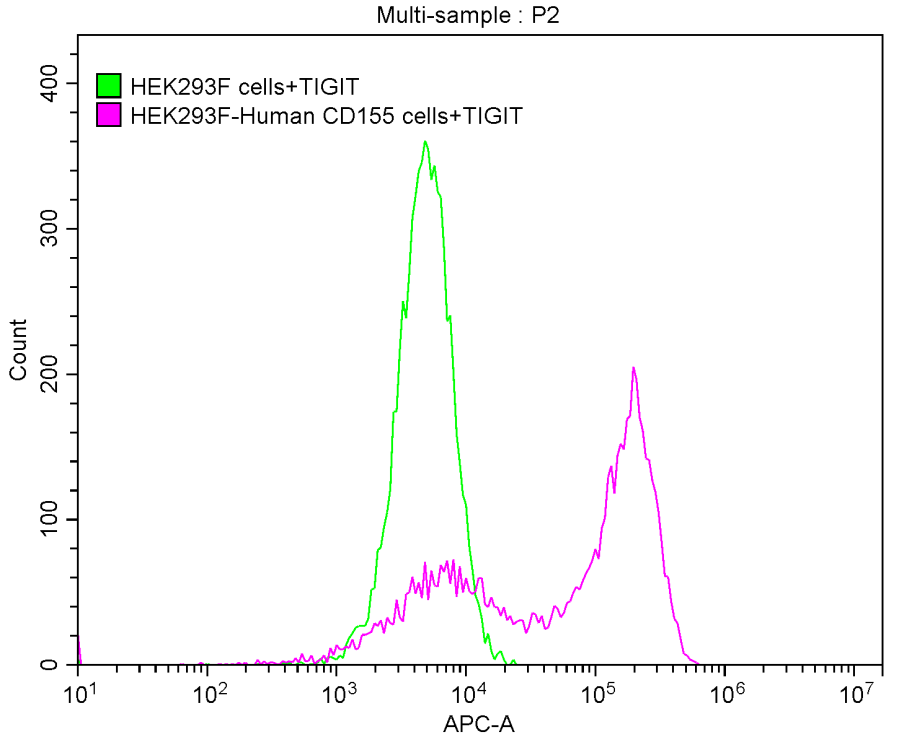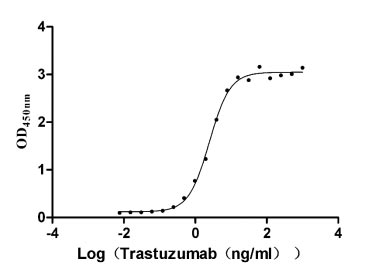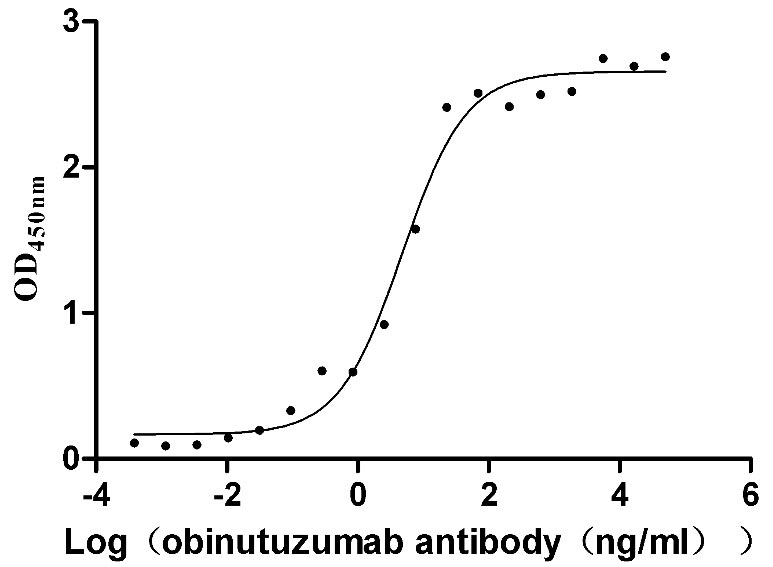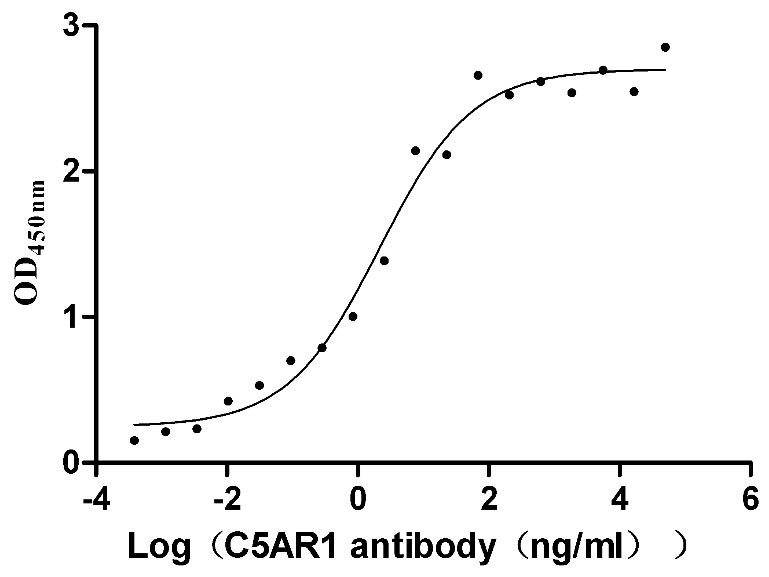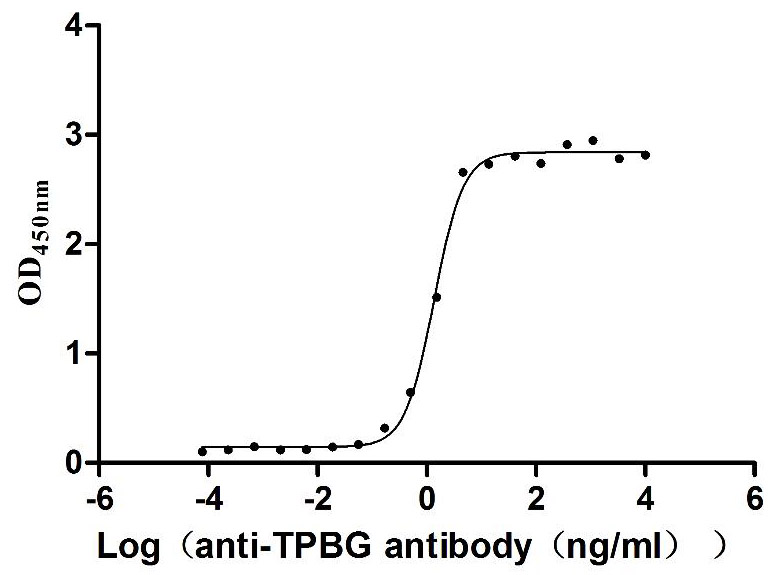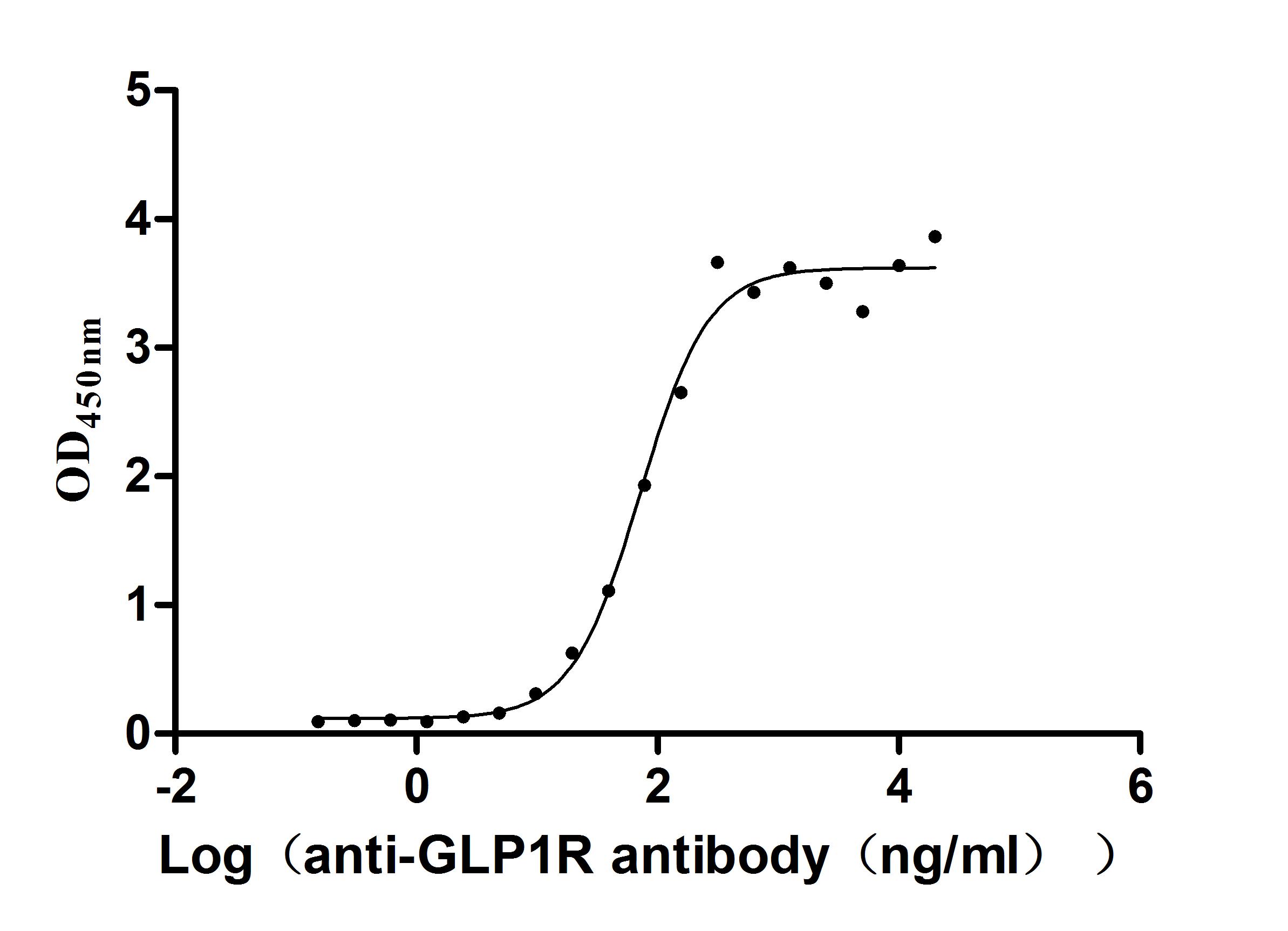Recombinant Rat Pannexin-1 (Panx1)
-
中文名稱:大鼠Panx1重組蛋白
-
貨號(hào):CSB-CF017425RA
-
規(guī)格:
-
來源:in vitro E.coli expression system
-
其他:
產(chǎn)品詳情
-
基因名:
-
Uniprot No.:
-
別名:Panx1; Px1; Pannexin-1
-
種屬:Rattus norvegicus (Rat)
-
蛋白長度:Full length protein
-
表達(dá)區(qū)域:1-426
-
氨基酸序列MAIAHLATEYVFSDFLLKEPTEPKFKGLRLELAVDKMVTCIAVGLPLLLISLAFAQEISI GTQISCFSPSSFSWRQAAFVDSYCWAAVQQKNSLQSESGNLPLWLHKFFPYILLLFAILL YLPALFWRFAAAPHLCSDLKFIMEELDKVYNRAIKAAKSARDLDLRDGPGPPGVTENVGQ SLWEISESHFKYPIVEQYLKTKKNSSHLIMKYISCRLVTFAVVLLACIYLSYYFSLSSLS DEFLCSIKSGVLRNDSTIPDSFQCKLIAVGIFQLLSLINLLVYALLVPVVIYTLFVPFRQ KTDVLKVYEILPTFDVLHFKSEGYNDLSLYNLFLEENISELKSYKCLKVLENIKSNGQGI DPMLLLTNLGMIKMDVIDGKVPMSLQTKGEDQGSQRMDFKDLDLSSETAANNGEKNSRQR LLNSSC
Note: The complete sequence may include tag sequence, target protein sequence, linker sequence and extra sequence that is translated with the protein sequence for the purpose(s) of secretion, stability, solubility, etc.
If the exact amino acid sequence of this recombinant protein is critical to your application, please explicitly request the full and complete sequence of this protein before ordering. -
蛋白標(biāo)簽:N-terminal 10xHis-tagged
-
產(chǎn)品提供形式:Liquid or Lyophilized powder
Note: We will preferentially ship the format that we have in stock, however, if you have any special requirement for the format, please remark your requirement when placing the order, we will prepare according to your demand. -
緩沖液:Lyophilized from Tris/PBS-based buffer, 6% Trehalose, pH 8.0
-
儲(chǔ)存條件:Store at -20°C/-80°C upon receipt, aliquoting is necessary for mutiple use. Avoid repeated freeze-thaw cycles.
-
保質(zhì)期:The shelf life is related to many factors, storage state, buffer ingredients, storage temperature and the stability of the protein itself.
Generally, the shelf life of liquid form is 6 months at -20°C/-80°C. The shelf life of lyophilized form is 12 months at -20°C/-80°C. -
貨期:Basically, we can dispatch the products out in 1-3 working days after receiving your orders. Delivery time may differ from different purchasing way or location, please kindly consult your local distributors for specific delivery time.Note: All of our proteins are default shipped with normal blue ice packs, if you request to ship with dry ice, please communicate with us in advance and extra fees will be charged.
-
注意事項(xiàng):Repeated freezing and thawing is not recommended. Store working aliquots at 4°C for up to one week.
-
Datasheet & COA:Please contact us to get it.
相關(guān)產(chǎn)品
靶點(diǎn)詳情
-
功能:Structural component of the gap junctions and the hemichannels. May play a role as a Ca(2+)-leak channel to regulate ER Ca(2+) homeostasis.
-
基因功能參考文獻(xiàn):
- the upregulation of Pannexin1 expression may be involved in apoptosis and degeneration of neurons in the rat brain following ICH, and may contribute to subsequent cognitive dysfunction. PMID: 29484398
- panx1 contributes to distension- or LPS-evoked ATP release into the lumen of the bladder and that luminal release can modulate voiding function. PMID: 25630792
- Px1 channels releasing ATP have any role in the constrictor actions of alpha1-adrenoceptor activation PMID: 25637780
- These findings indicate that Panx1 participates in urothelial mechanotransduction and signaling by providing a direct pathway for mechanically-induced ATP release and by functionally interacting with P2X7Rs PMID: 25170954
- It was shown that angiotensin signaling in type II cells activates an inward current carried by Panx1 channels. PMID: 25172944
- ETV4 and cAMP response elements play a role in the transcriptional regulation of Panx1 in the epididymis. PMID: 25376229
- Panx1 up-regulation contributes to pain hypersensitivity induced by nerve injury. PMID: 25925949
- Study found that astrocytes released ATP in response to mechanical strain, with pannexin 1 the predominant efflux pathway PMID: 24839011
- Pannexin-1 hemichannels regulate urothelial overactivity in the bladder via activation of uracil nucleotidetide (UDP)-sensitive P2Y6 receptors. PMID: 24269631
- These results suggest that panx1 contributes to pathophysiological ATP release in lipoapoptosis induced by saturated FFA; panx1 may play a role in hepatic inflammation by mediating an increase in extracellular ATP concentration in lipotoxic liver injury. PMID: 22972801
- Activation of NMDA receptors during anoxia/ischemia recruits Src family kinases to open Panx1 channels, leading to sustained neuronal depolarizations. PMID: 22956847
- pannexin 1 is expressed in smooth muscle but not in endothelium of middle cerebral arteries. PMID: 22301733
- The results suggest that Panx1c and Panx1d may serve as dominant-negative effectors to modulate the functions of Panx1a through formation of heteromeric channels. PMID: 21907716
- ATP, released through Px1 hemichannels, activates purinergic P2X7 receptors, resulting in the closure of Px1 hemichannels during ischemia. PMID: 21185900
- Overexpression of pannexins 1 and 2 in pituitary cells enhanced the release of ATP. PMID: 21467198
- indicate that the oligomerization and trafficking of Panx1 are regulated by the C-terminal domain, whereas internalization of long lived Panx1 channels occurs in a manner that is distinct from classical endocytic pathways PMID: 21659516
- In the testis, Panx1 localized to the basal compartment of the seminiferous epithelium, while Panx3 was expressed in Leydig cells. In the ED, both Panxs were expressed in the apical region of ciliated cells. PMID: 21337450
- Panx1 channels potentially promote arrhythmogenic activities. PMID: 21041301
- Pannexin1 and Pannexin2 channels show quaternary similarities to connexons and different oligomerization numbers from each other PMID: 20516070
- Panx1 and Panx3 are coexpressed in the mammalian epidermis, and the regulation of Panx1 plays a key role in keratinocyte differentiation. PMID: 20332104
- New insight into relationship of decreased glucose to increased seizure threshold is established through neuronal adenosine triphosphate (ATP) release via pannexin hemichannels and hippocampal adenosine A1 receptors coupled to potassium ATP channels. PMID: 20237259
- although Panx1 and Panx3 share a common endoplasmic reticulum to Golgi secretory pathway to Cx43, their ultimate cell surface residency appears to be independent of cell contacts and the need for intact microtubules PMID: 20086016
- the different expression patterns of pannexin 1 (Panx1) and pannexin 2 (Panx2) in the brain indicate that pannexins form cell type-specific gap junctions with distinct properties that may subserve different functions. PMID: 14597722
- Panx1 and Panx2 are abundantly expressed in the retina, and may therefore contribute to the electrical and metabolic coupling, or to signaling between retinal neurons PMID: 16616526
- Has kinetics and dynamics that make it unique to serve distinct functions separate from connexin-based channels. PMID: 18649184
- Results show that pannexins 1, 2, and 3 are abundantly expressed in the mouse and rat cochlea and demonstrate distinct cellular distributions. PMID: 19009624
- study concludes that Px1 hemichannel opening is triggered by NMDAR stimulation and can contribute to epileptiform seizure activity PMID: 19056988
- in contrast to macrophages and monocytes in which low intracellular K(+) has been suggested to trigger inflammasome activation, in neural cells, high extracellular K(+) activates caspase-1 probably through pannexin 1 PMID: 19416975
顯示更多
收起更多
-
亞細(xì)胞定位:Cell membrane; Multi-pass membrane protein. Cell junction, gap junction. Endoplasmic reticulum membrane; Multi-pass membrane protein.
-
蛋白家族:Pannexin family
-
組織特異性:Expressed in the eye, thyroid, prostate, kidney and liver. Abundantly expressed in the CNS, including hippocampus, olfactory bulb, cortex, cerebellum and white matter.
-
數(shù)據(jù)庫鏈接:
Most popular with customers
-
Recombinant Human T-cell immunoreceptor with Ig and ITIM domains (TIGIT), partial (Active)
Express system: Mammalian cell
Species: Homo sapiens (Human)
-
Recombinant Human Receptor tyrosine-protein kinase erbB-2 (ERBB2), partial (Active)
Express system: Mammalian cell
Species: Homo sapiens (Human)
-
Recombinant Human B-lymphocyte antigen CD20 (MS4A1)-VLPs (Active)
Express system: Mammalian cell
Species: Homo sapiens (Human)
-
Recombinant Human C5a anaphylatoxin chemotactic receptor 1 (C5AR1)-VLPs (Active)
Express system: Mammalian cell
Species: Homo sapiens (Human)
-
Recombinant Human G-protein coupled receptor family C group 5 member D (GPRC5D)-VLPs (Active)
Express system: Mammalian cell
Species: Homo sapiens (Human)
-
Recombinant Human Trophoblast glycoprotein (TPBG), partial (Active)
Express system: Mammalian cell
Species: Homo sapiens (Human)
-
Recombinant Human Glucagon-like peptide 1 receptor (GLP1R), partial (Active)
Express system: Mammalian cell
Species: Homo sapiens (Human)
-
Recombinant Human Transmembrane 4 L6 family member 1(TM4SF1)-VLPs (Active)
Express system: Mammalian cell
Species: Homo sapiens (Human)


